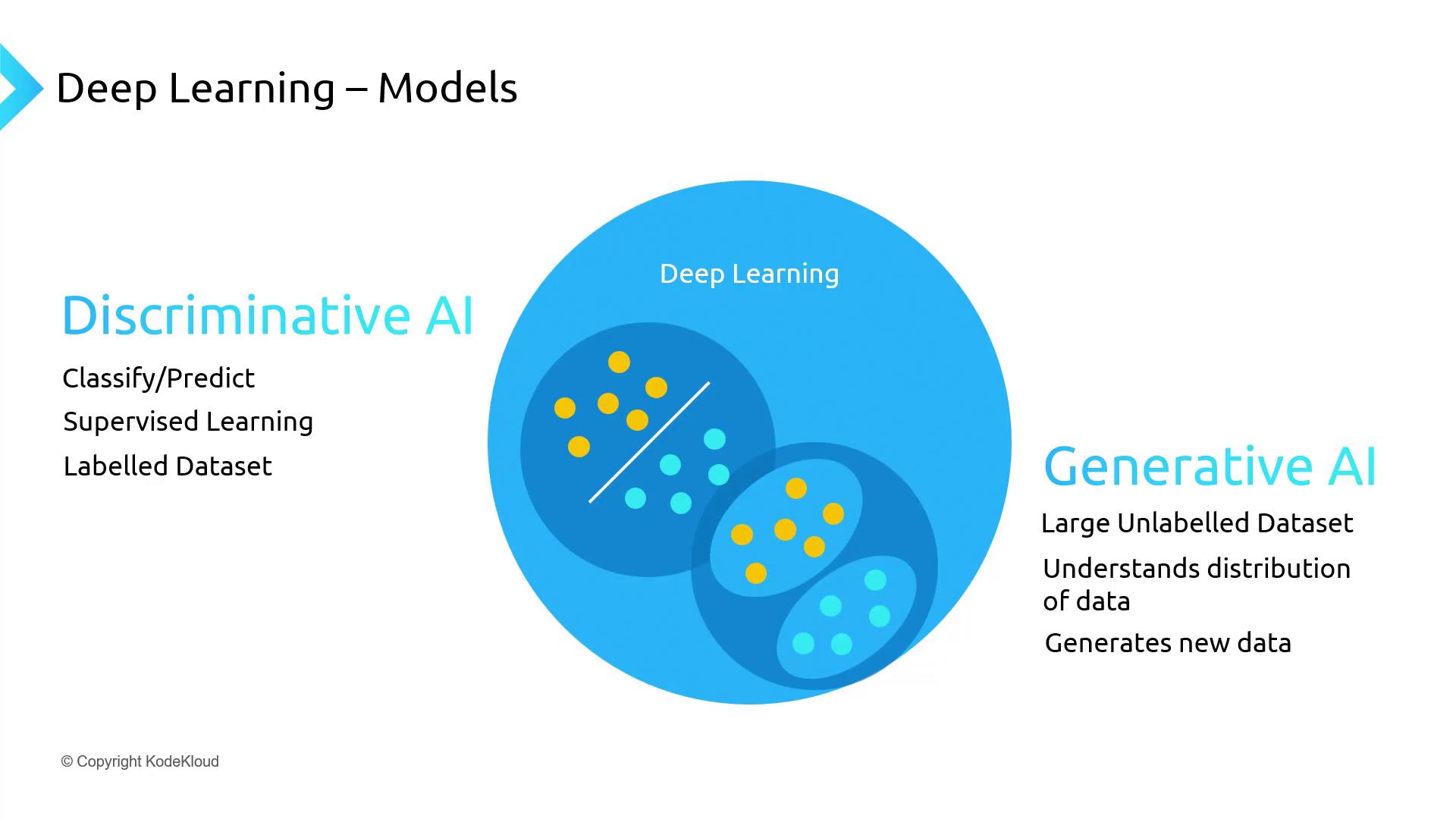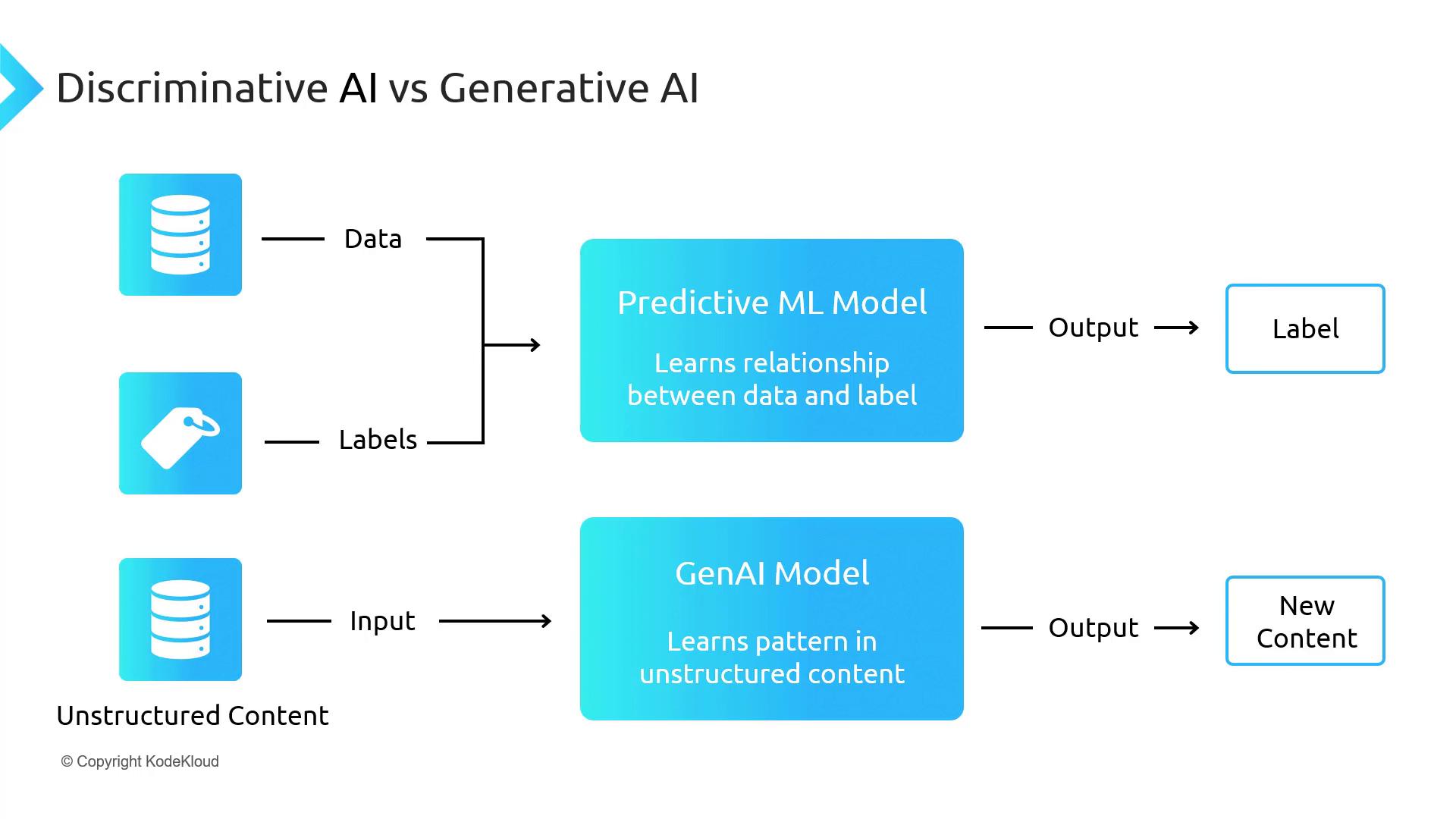Mastering Generative AI with OpenAI
What is Generative AI
Introduction to Generative AI
Generative AI is a rapidly advancing branch of deep learning that empowers users to create new, high-quality content—text, images, audio, and video—by learning the underlying patterns of large datasets. Once limited to research labs, generative AI tools are now accessible via web APIs and user-friendly interfaces, transforming how we automate creativity and problem solving.
Discriminative AI vs. Generative AI
Deep learning approaches generally fall into two categories:
| Model Type | Learning Paradigm | Primary Function | Input Data |
|---|---|---|---|
| Discriminative | Supervised (labeled data) | Classification and prediction | Images, tabular |
| Generative | Unsupervised / Semi-supervised (unlabeled data) | Content generation | Text, images, video |

Note
Discriminative models estimate the probability of labels given inputs (P(y|x)), whereas generative models learn the joint probability of inputs and outputs (P(x, y)) to create fresh data.
Practical Example
Discriminative AI
Input: Photo of a dog
Output: Label “dog”Generative AI
Input: Photo of a dog + prompt “dog wearing goggles”
Output: New image of a dog with goggles

Core Capabilities of Generative AI
Generative models transform raw patterns into rich, novel outputs:
- Text generation
Articles, summaries, code snippets in English and multiple languages - Image and artwork creation
Photorealistic renders, illustrations, style transfers - Video sequence synthesis
Frame interpolation, short clips, animation - Audio and speech
Music composition, voice cloning, sound effects
Foundation Models: The Backbone of Generative AI
Foundation models are large-scale architectures pretrained on vast, diverse datasets. They serve as the starting point for fine-tuning on specific tasks:
- Examples
- GPT family (OpenAI)
- BERT and RoBERTa (Google)
- Stable Diffusion (Stability AI)
- Benefits
- Reduced training time
- Transfer learning for specialized applications
- Robust performance on unseen inputs
Warning
Always verify generated content for factual accuracy and potential biases. Generative AI can inadvertently replicate harmful patterns from its training data.
Further Reading and References
Watch Video
Watch video content